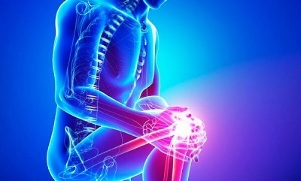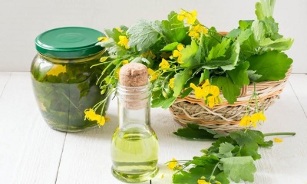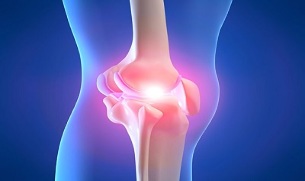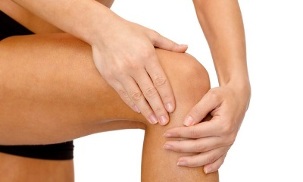Thousands of people, especially after fifty, suffer from various diseases of the musculoskeletal system. This has a significant impact on quality of life, imposes many restrictions, and causes significant pain.
Knee arthrosis, also known as gonarthrosis, is rightly considered one of the leaders in the list of the most common causes of disability among the adult population in Russia. However, you should not think that you are not at risk for this disease at a young age: you can leave the doctor’s office with the entry “knee joint gonarthrosis” on the card long before retirement.
Concept and causes of knee arthrosis
Osteoarthritis is nothing more than destructive changes in cartilage tissue, that is, its destruction and depletion, along with a decrease in the volume of synovial fluid.
There are several possible reasons for this:
- Delayed injuries and constant stresses in the joints, exhausting physical work;
- Hereditary factors;
- Metabolic disorders;
- Overweight;
- Poor nutrition, lack of essential vitamins and minerals.
Stages of knee arthrosis
Doctors distinguish three stages of knee arthrosis:
- The signs of the first stage are short-term pain that occurs after the effort and goes away fairly quickly during rest. The pain is dull, sore. From the outside, the joint appears healthy, with only a slight swelling at this stage;
- In the second stage, the pain syndrome is characterized by greater strength and duration. Patients experience some stiffness in the joint in the morning, a crackle moving in the knee. Some restriction of movement is possible, the volume of the joint increases;
- In the third stage, there is a significant restriction of mobility, constant severe pain, severe deformity of the joint.
Unfortunately, almost no one speaks at the first signs of the disease. As a result, people are already turning to professionals with advanced osteoarthritis when much more complex treatment is needed.

With a delayed diagnosis and a lack of proper therapy, osteoarthritis of the knee can have very serious consequences, all the way to complete immobility of the affected leg, when movement in the crutchless space becomes completely impossible.
In the most advanced cases, the only way out is surgery to implant an artificial joint.
These operations can be complex, expensive, and complicated.
That’s why it’s so important not to ignore knee pain and delay your doctor’s visit.
Treatment of knee arthrosis with alternative methods
Complex therapy is important in overcoming gonarthrosis: a combination of drugs prescribed by a specialist with folk remedies for knee arthrosis.
Traditional methods of treating knee arthrosis have a fairly good effect, especially in the early stages of the disease. Their use at least alleviates the pain and maximally allows them to avoid taking the case for expensive operations.
The fact that this disease is chronic and therefore requires constant attention should not be overlooked. Modern experts attribute knee arthrosis to incurable progressive diseases.
Accordingly, much of the treatment consists of the continuous use of certain medications to relieve pain and reduce the inflammatory process. However, prolonged medication without interruption is harmful. This is why it is so important for people with gonarthrosis to be able to deal with folk methods, at least during the period of remission.
So find out what the alternative treatment is for knee arthrosis. Experience in fighting the disease dates back hundreds of years, so the list of treatments available at home is very extensive. For added convenience, all folk remedies for treating knee arthrosis can be divided into four groups.
Herbs

The first group includes herbs: burdock, onion, celandine, cabbage leaves, etc. Herbal treatment of knee arthrosis involves the use of self-medications both inward and outward.
- Compressors made from fresh horseradish root, cabbage or burdock leaves, which should be applied to a sore knee, left heat-insulated overnight with cotton wool or several layers of bandages, provide tangible relief. Previously, cabbage leaves were crumpled or beaten to release juice for greater effect, the leaves can be lightly smeared with honey. The burdock leaves are dipped in boiling water for 30 seconds and then cooled. Chop the horseradish root and heat it slightly;
- You can also use celandine: a few tablespoons of dried herbs should be boiled in boiling water and then cooled to 40-50 ° C. The resulting infusion is eaten before a meal and the remaining cooked celandine is used as a compress;
- If you are in the early stages of the disease, an ice cure may be used. The ice hose is securely fastened to the sore spot with a woolen cloth and remains there until the ice melts. This compression is used when you need to get rid of edema quickly and stop the inflammatory process;
- Compression takes a lot of time, so for many people, different rubbing is more comfortable. Rubbing is a liquid mixture of medications that must be rubbed vigorously into the skin of the affected area. Rubs from elecampane root, vodka-aged chamomile tincture, yellow dandelion tincture and sunflower oil are particularly suitable for the treatment of arthrosis. It is better to apply it on clean, ideally steamed skin. The sore knee should be rubbed for 5-10 minutes a day and then wrapped in a towel or any warm cloth for a while;
- Another proven recipe is the saber tincture, which is prepared by pouring 1-1, 5 tablespoons of herbs into 100 ml of vodka and leave. The knee is treated with the resulting tincture twice a day for one month;
- There is a recipe based on potato germ. They are washed, placed in a glass container, poured with vodka and left out of the light for three weeks. After this period, the infusion is filtered and the sprouts used are discarded;
- You can also peel and chop the garlic head, pour 200 ml of vegetable oil on it and leave it in the dark for a week. The tincture has a strong scent, this should be taken into account if you need to go somewhere shortly after rubbing. In this case, you must thoroughly wash the places where the tincture has been placed;
- Many people note the benefits of herbal baths: malt, senna herb and others. The pine bath has a good effect. You can either buy a ready-made conifer collection at the pharmacy or make a decoction yourself. To do this, you need to take young coniferous twigs with a total volume of approximately one liter, pour two or three liters of water and cook for about 10 minutes. The broth is then filtered, the twigs are discarded and the liquid is poured into a water bath. Bath with herbs for 15 minutes.
The simplest is a salt bath. Three tablespoons of common or sea salt and the same amount of baking soda are poured into a pool with hot water and then the sore knee is immersed in the pool for 15 minutes.
After bathing, the feet should be dried quickly and hidden with a warm cloth.
Self-administered infusions should be administered orally. It requires no boiling, the dried herbs are simply poured over boiling water and left to cool. The infusions should be taken 2-3 times a day, one glass at a time. Infusions of horseradish, juniper, young nettle and birch leaves are used to treat knee inflammation.
In the case of pain, the healing infusion of onions is very effective: pour two medium-sized onions with one liter of boiling water and stick to it, consuming the resulting liquid in three portions.

Another simple yet effective recipe is blueberry tea. Pour a tablespoon of fresh or dried blueberry leaves into a glass of boiling water.
Like most infusions, this tea should be drunk from half a glass twice a day for a month, preferably in the afternoon.
The use of these decoctions helps to restore metabolic processes in the affected cartilage tissues, reduces pain syndrome and helps to remove harmful compounds from the joint fluid.
Self-massage
The second popular folk remedy for knee arthrosis is self-massage techniques. Self-massage is very effective while not requiring any cost except temporary. Please note that the knee must be prepared before the session! It is best to heat in a warm shower or with a light circular rub.
Then you can go directly to the massage.
Its main techniques are:
- Circular movements with the palm of your hand. We alternate the lungs without pressing, stroking clockwise and counterclockwise, while touching not only the knee itself but also the adjacent areas. This technique reduces muscle tone and improves blood and lymph outflow from the area affected by arthrosis;
- Rubbing. Rub your knees in a circle while providing tangible pressure. Can be rubbed with palms or folded fists. This relaxes the muscles and improves joint mobility. Circular movements in the Turkish pose are most effective if the condition of the knee allows this position;
- Knee to knee with fingertips, medium pressure. This technique allows it to have a beneficial effect on deeper structures.

Self-massage can be done with a comfortable temperature bath. Some sources mention nighttime honey massage, but usually use a cream or special ointment. You can also make such an ointment.
To do this, add a small amount of essential oil to the tank with Vaseline. Rosemary oil has a positive effect on blood circulation, peppermint oil has a cooling and analgesic effect, and lavender oil stops inflammation.
The duration of the self-massage is about 15 minutes, 2-4 times a day. Only regular self-massage will be effective. In addition, massage is useful as a preventive measure, in which case it will be sufficient to perform it at least once a week.
You should not experience pain or discomfort during a self-massage, otherwise it may only aggravate the situation.
Physiotherapy
The third cure is physiotherapy. It also requires preliminary preparation and warm-up, which can be used as a self-massage. Such a complex use of these two tools has a positive effect on their effectiveness.
Here are three simple exercises:
- Sit down on a table or high chair with your feet on the floor. Then just swing your foot from side to side, keep the swings sharp and the range of motion too large. The duration of the exercise is about seven minutes;
- Sit in a comfortable chair with your knees bent at right angles and your feet straight on the floor. The exercise can only be done with one affected leg, but it is helpful to use both legs not only when both knees are affected, but also for preventive purposes. Place your foot on your toes, lift your heel off the floor as high as possible, then lower it to the floor, then continue this movement at a leisurely pace for five minutes. It can be performed alternately or simultaneously with two feet;
- Take the same position as in the previous situation, just rest on your heels just now. Tap the ground lightly with your toes. The duration of the exercise is five minutes.
Some exercises can be done early in the morning, even in bed. A kind of exercise for the joints. One such exercise is cycling practice.
Another exercise is performed as follows: bend one leg, leave the other outstretched, pull your outstretched toe as far toward you as possible, and then change legs. Repeat several times. You can also take turns pulling your legs to your chest and straightening it.
Performance Setup
The fourth way to treat knee arthrosis at home is to consider dietary adjustment. It is not enough to influence the body from the outside, it is necessary to make up for the lack of substances needed to restore the structure of cartilage cells.
Therefore, you need to change the standard menu: add some products, exclude some, or minimize their use.
The issue of nutrition is especially important for overweight people, as in the case of gonarthrosis, the extra pounds further aggravate the already poor condition of the joint structures.
Let's start with the list of recommended products:

- Dairy products: cheese, cottage cheese, sour cream, kefir with a fat content not exceeding 3, 2%. They contain many proteins that are useful in the repair of cartilage tissue;
- Millet, rice and buckwheat porridge, wholemeal bread. These foods are rich in complex carbohydrates, without which the synthesis of synovial fluid is impossible. You should not buy instant porridge. They will not be useful because the cereals are processed for them in a completely different way than when making homemade porridge, which results in the destruction of most of the useful elements;
- Foods containing gelatin: jelly fish, jelly meat, jelly, pudding. Gelatin ensures the recovery of cartilage cells due to the high content of collagen and chondroitin;
- Any fruit and vegetable as it is high in fiber. Greens, carrots, beans, celery, radishes, and cauliflower are especially useful;
- Steamed or steamed meat and fish, especially in combination with vegetables;
- Sprouted wheat;
- Nuts: hazelnuts, pine nuts and almonds.
For better absorption of healthy foods, it is recommended to consume two glasses of mineral water a day.
Go to the list of harmful products:
- Salt and spices. It cannot be completely eliminated from the diet, however, in order to combat joint diseases, it is worth restricting their use. This rule does not apply to turmeric: on the contrary, its use is considered useful. Turmeric has been shown to have a positive effect on cartilage tissue, contributing to its growth and recovery;
- Any fatty, smoked and marinated food;
- Semi-finished products;
- Fast food and carbonated drinks;
- Alcoholic beverages: even a small amount of alcohol slows down metabolic processes, which negatively affects the regeneration process;
- Sweets and flour products. They are filled with simple carbohydrates that can trigger weight gain. As mentioned above, the extra pounds put an extra strain on joints already weakened by arthritis;
- Coffee. This drink can be consumed, but only in small amounts, otherwise the calcium will be washed out of the body;
- Pepper, cabbage and tomatoes that block collagen, preventing cartilage tissue regeneration and growth;
- Citrus and cherries. Due to their high acidity, their use adversely affects bone structure.
To get the most out of this diet, do not forget to drink enough water: at least 1, 5 liters per day. The daily caloric intake should not exceed 3000 and the food should be at room temperature, in no case hot.
Remember that treating knee arthritis is a long process and how successful it will be depends on your willingness to perform all the necessary procedures and follow a diet on a regular basis.
Regular visits to the doctor, listening to his advice and at the same time using folk remedies for osteoarthritis of the knee can be a significant step forward in the fight against the disease.

























